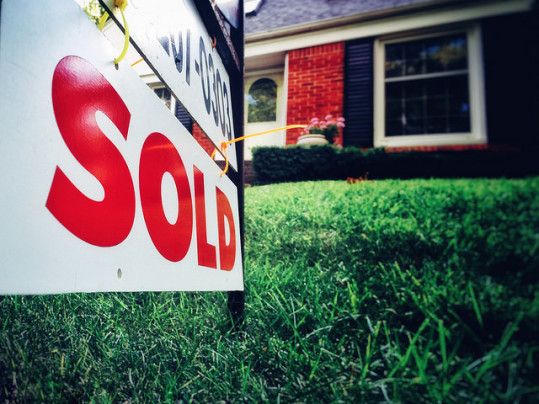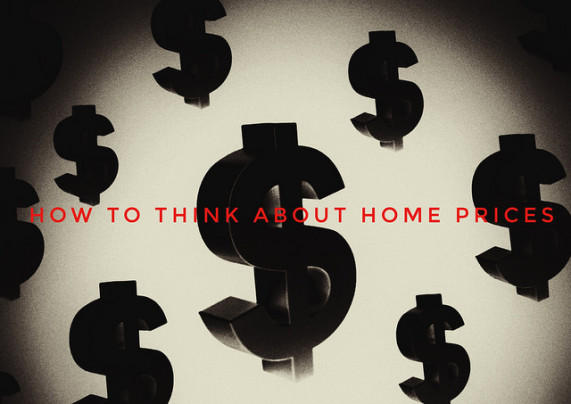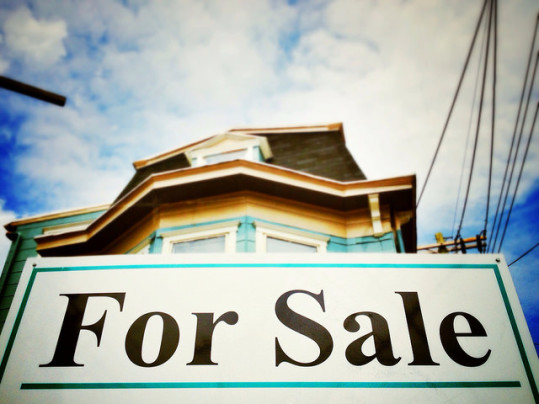This year’s housing market depends a lot on whether or not current homeowners decide now’s the time to put their home up for sale. With inventory low in many markets, home prices have been climbing and causing affordability concerns for buyers. But there are two ways to relieve upward pressure on prices. One is more new home construction. The other is more homeowners putting their homes on the market. Doug Duncan, Fannie Mae’s senior vice president and chief economist, says the market may get a boost, if current homeowners become more active. “The housing market could get some tailwinds from a seasonal rise in for-sale inventory, particularly as some sellers seek to lock in profits from recent rapid home price gains,” Duncan said. “The market could also get a boost from homebuyers who decide to jump into the market before rates rise further.” The good news is there are an increasing number of Americans who believe this is the time to sell. In fact, Fannie Mae’s most recent Home Purchase Sentiment Index saw a 9 percent jump in the number of survey participants who said they feel it’s a good time to sell a house. If more homeowners begin to list their homes this spring, it’ll offer buyers better choices. It’ll also help moderate future price increases. More here.
Archive for April 2017
How New Homes Help Buyers & The Economy
April is New Homes Month and, according to data from the Commerce Department, there’s a number of reasons to celebrate. Not only do new homes offer buyers the advantage of having a brand-new house with all new plumbing, electrical, mechanical, and structural features but they also provide increased energy efficiency and more amenities. Simply put, new homes can offer things a home built 40 years ago can’t. They’re also a good indicator of the health of your local housing market and economy. Research from the National Association of Home Builders shows every 100 single-family homes built creates nearly 300 jobs, $28 million in wage and business income, and $11 million in tax revenue. In other words, new home construction helps the local economy in addition to offering buyers more choices and helping moderate prices. So far this year, buyer demand and consumer confidence have both been high and there’s an expectation that more new homes will be built to accommodate those prospective buyers. Granger MacDonald, NAHB’s chairman, says there’s reason for optimism. “Our builders remain optimistic about the market for newly-built single-family homes and consumer confidence is strong, which should set the stage for a strong spring home buying season,” MacDonald said. “Americans continue to place a high priority on homeownership and work hard to achieve this goal for their families.” More here.
Average Home Loan Reaches New Record High
According to the Mortgage Bankers Association’s Weekly Applications Survey, the size of the average home loan has reached a record high. And, since the survey has been conducted since 1990 and covers 75 percent of all retail residential mortgage applications, that’s saying something. But, though the increasing size of the average mortgage may seem like the natural result of rising home prices, it actually has more to do with the fact that there has been more buying activity at the higher end of the real-estate market recently. In short, there are more expensive homes on the market than there are affordable homes to buy. As inventory picks up on the lower end of the market, the size of the average mortgage will likely moderate. Also in the report, mortgage rates were relatively flat from the week before, with little change seen among 15-year fixed-rate mortgages or 30-year fixed-rate loans with both conforming and jumbo balances. Loans backed by the Federal Housing Administration saw the biggest change, falling from the week before. Lynn Fisher, MBA’s vice president of research and economics, says the market was fairly steady last week. “Markets appeared to hit pause last week, with little new information emerging about upcoming administrative or legislative policy changes,” Fisher told CNBC. More here.
Educated Buyers Make Happier Homeowners
The best defense against making avoidable mistakes is education. The more you know about something, the less likely you are to screw it up. So you’d think home buyers would want to learn as much as possible before heading out to find a house to purchase. After all, buying a house is major financial transaction and a serious commitment. And yet, surveys of potential home buyers consistently find that large majorities of them share in some common misconceptions about what it takes to buy a house and how the process should unfold. Recently, Fannie Mae’s Economic & Strategic Research Group interviewed real-estate agents, buyers, and loan officers in an effort to figure out why there isn’t more focus on homeownership education before buying. Not surprisingly, most of their answers boiled down to there not being enough time during the process to focus on education. But common misunderstandings about down payment requirements, financing options, and the added costs of homeownership can scare off buyers or lead them to make unwise financial decisions. That’s why it’s always important, as a buyer, to ask questions along the way. Though you may not have time for hitting the books, you can always lean on the expertise and knowledge of the professionals you hired to guide you along the way. More here.
How To Think About Home Prices In 2017
Home prices can be intimidating. Without some guidance and understanding, it’s easy to get confused about what a particular price will mean when all is said and done. Mortgage rates, taxes, insurance, and your income all play a role in how much house you can afford. So a simple price tag won’t always accurately reflect what that number means in terms of your monthly bills, the overall costs of homeownership, and how it all fits into your plans and goals. A price that is out of reach when mortgage rates are up becomes affordable when they fall. Naturally, the same is true for incomes. When wages grow, so does buying power. That’s why this year’s housing market is, in many ways, a race between prices, rates, and wages. If continued economic growth and job market gains boost buyers’ incomes and confidence in their employment status, it’ll help alleviate concerns about rising home prices. According to Freddie Mac’s most recent monthly outlook, it should be close. Though they expect affordability conditions to affect buyers, they also expect continued economic gains and job market improvement. All in all, they estimate there will be 5.9 million home sales this year, down only slightly from 6 million in 2016. In other words, prices and rates may have an effect but only a small one. More here.
Selling Your House Means Becoming A Buyer
It’s somewhat natural to want to break up the housing market into buyers and sellers. You’re either a homeowner looking for a home buyer or on the hunt for a new place to call your own. But though that’s the way a lot of us think about the real estate market, the fact is, if you’re in the process of selling a house, you’re likely also in the process of looking for a house to buy. And that complicates the transaction a bit more than say a renter looking to become a first-time buyer. Why? Mostly, it’s due to timing. And, according to one recent survey, that’s especially true these days. Because the number of homes for sale is lower than normal in many markets, home sellers are concerned about being able to find a house to move into once they’ve sold theirs. So much so that 65.6 percent of surveyed real estate agents said it’s the greatest challenge for sellers in their market. So what should a home seller do? Well, fortunately, there are options – whether it’s a contingency worked into the sale contract or an arrangement to stay with family in the interim. Whatever the particulars of your situation, your prospects as a buyer are something to consider when deciding when to put your home on the market. More here.






